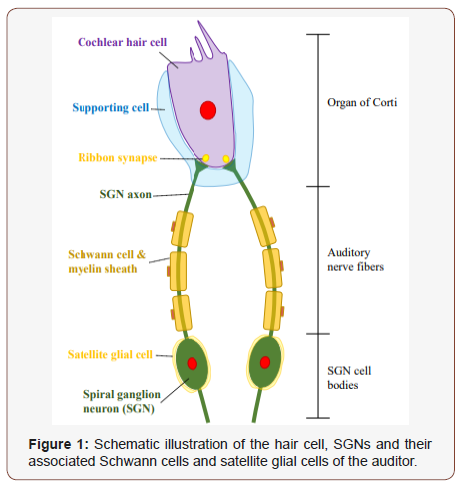

They develop a conduction block of the auditory nerves when their core body temperature rises due, most likely, to a demyelinating disorder of the auditory nerve. These children have an auditory neuropathy manifested by a disorder of auditory nerve function in the presence of normal cochlear outer hair cell functions. Sensory nerve action potentials from median nerve in one of the children showed no abnormalities on warming of the hand to 39 degrees C. No other peripheral or cranial nerve abnormalities were found in any of the children. Acoustic reflexes subserving middle ear muscles and olivocochlear bundle were absent when febrile and when afebrile. One of the siblings tested when febrile had a profound elevation (>80 dB) of pure-tone thresholds and speech comprehension was absent.

Speech comprehension in quiet was normal but impaired in noise. When afebrile, there was a mild threshold elevation for all frequencies in the 15-yr-old and a mild elevation of thresholds for just low frequencies in the two siblings. Cochlear microphonic potentials were present in the three children, and a summating potential was likely present in two. Measures of cochlear receptor function using OAEs were normal in both febrile and afebrile states. The ABR in one of the children, tested when febrile, showed no ABR components. Silbernagl S, Despopoulos A (2003) Taschenatlas der Physiologie, Thieme, Stuttgart.To define mechanisms accounting for transient deafness in three children (two siblings, ages 3 and 6, and an unrelated child, age 15) when they become febrile.Īudiometric tests (pure-tone audiometry, speech and sentence comprehension), tympanometry, middle ear muscle reflex thresholds, otoacoustic emissions (OAEs), and electrophysiological methods (auditory brain stem responses, sensory evoked potentials, peripheral nerve conduction velocities) were used to test the children when they were afebrile and febrile.ĪBRs, when afebrile, were abnormal with a profound delay of the IV-V and absence of waves I-III. Langner G, Schreiner CE (1988) Periodicity coding in the inferior colliculus of the cat. Kollmeier B, Koch R (1994) Speech enhancement based on physiological and psychoacoustical models of modulation perception and binaural interaction. Kollmeier B (2003) Auditory principles in speech processing: Do computers need silicon ears? In: Proceedings of the 8th European Conference on Speech Communication and Technology (Eurospeech), ICSA International Speech Communication Association, pp. In: Kiessling J, Kollmeier B, Diller G, Versorgung und Rehabilitation mit Hörgeräten. Normales Mittelohr Laryng Rhinol Otol 67, 45–52. Hüttenbrink KB (1988) Die Mechanik der Gehörknöchelchen bei statischen Drucken, I. Hudspeth AJ, Choe Y, Mehta AD, Martin P (1998) Putting ion channels to work: Mechanoelectrical transduction, adaptation, and amplification by hair cells. Part III: Eardrum impedances, transfer funtions and model calculations.

Hudde H, Engel A (1997) Measuring and modeling basic properties of the human middle ear and ear canal. Gummer AW, Meyer J, Frank G, Scherer MP, Preyer S (2002) Mechanical transduction in outer hair cells. We retrospectively analyzed the auditory function of 15 patients. Green DM, Swets JA (1974) Signal detection theory and psychophysics, 2nd edition. The identification of the best method to correctly listen sound and speech has a high impact on pa-tients’ quality of life. J Acoust Soc Am 102, 2906–2919.ĭe Boer E (1980) Auditory physics. The auditory nerve, also known as the vestibulocochlear nerve, is a nerve in the inner ear that carries signals from the ear to the brain. J Neurosci 17, 2212–2226.ĭau T, Kollmeier B, Kohlrausch A (1997) Modeling auditory processing of amplitude modulation: II. Nature 350, 155–157.ĭallos P, He DZZ, Lin X, Sziklai I, Mehta S, Evans BN (1997) Acetylcholine, outer hair cell electromotility, and the cochlear amplifier. ORL 61, 305–310.ĭallos P, Evans BN, Hallworth R (1991) Nature of the motor element in electrokinetic shape changes of cochlear outer hair cells. The purpose of the present study was to evaluate evoked potential and single fibre responses to biphasic current pulses in animals with varying degrees of cochlear pathology, and to correlate any differences in the physiological response with status of the auditory nerve. Böhnke F, Arnold W (1999) 3D-finite element model of the human cochlea including fluid-structure couplings.


 0 kommentar(er)
0 kommentar(er)
